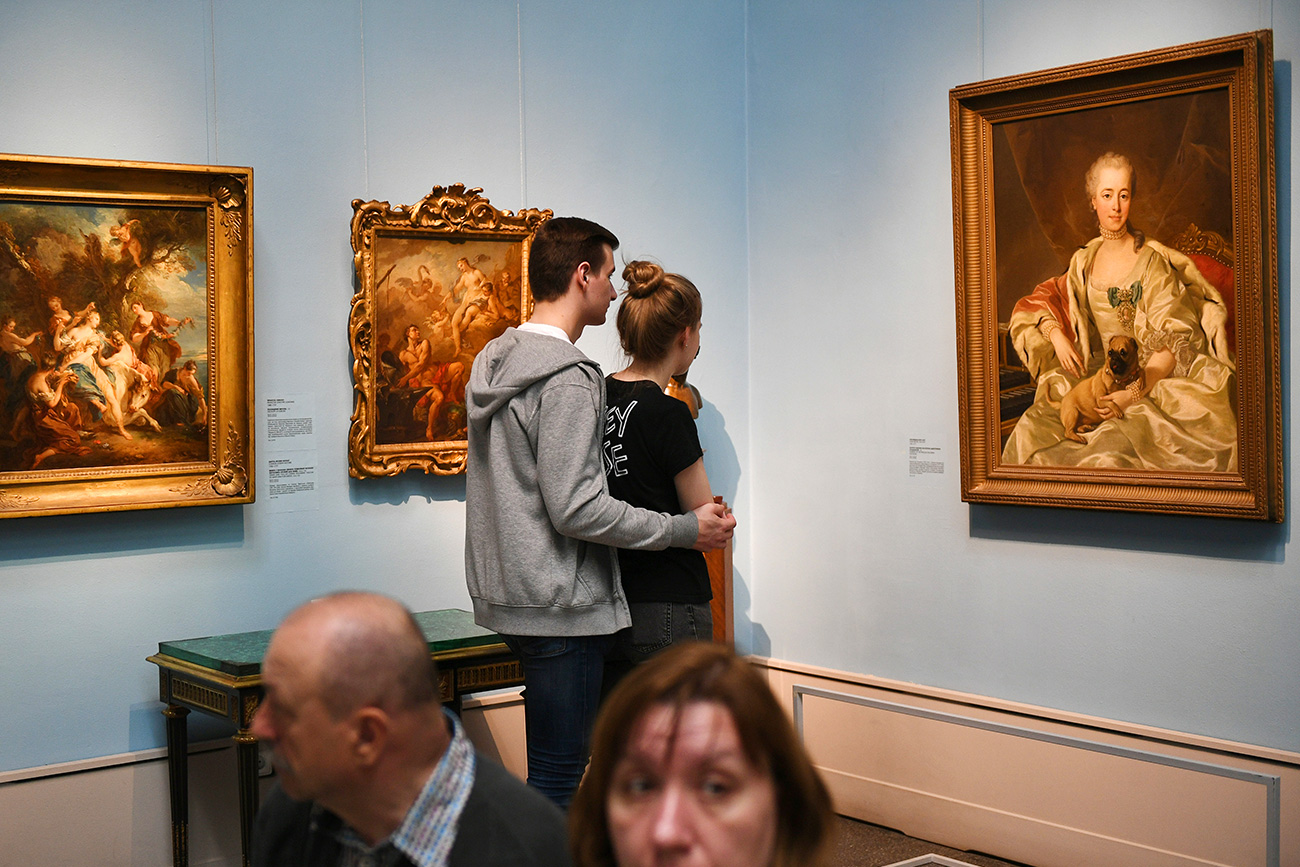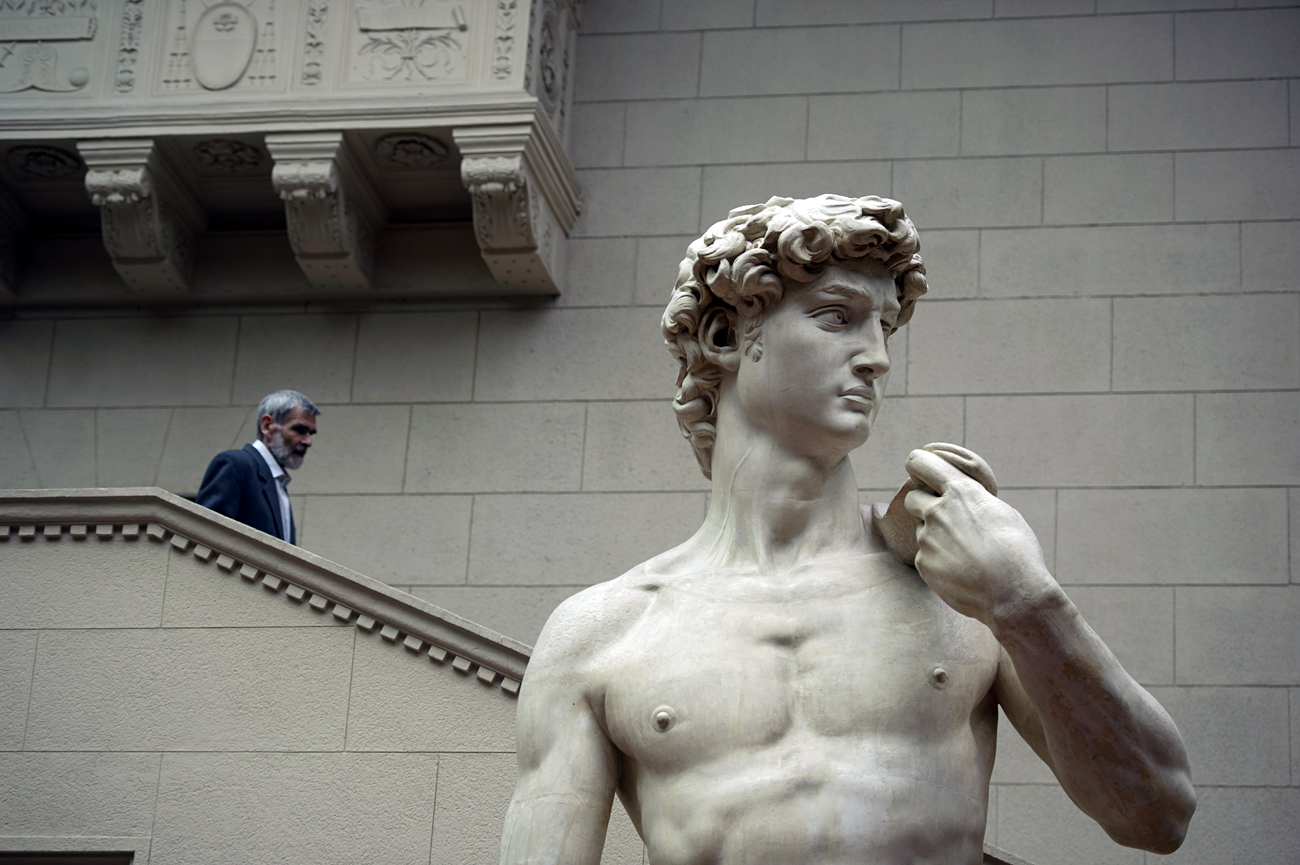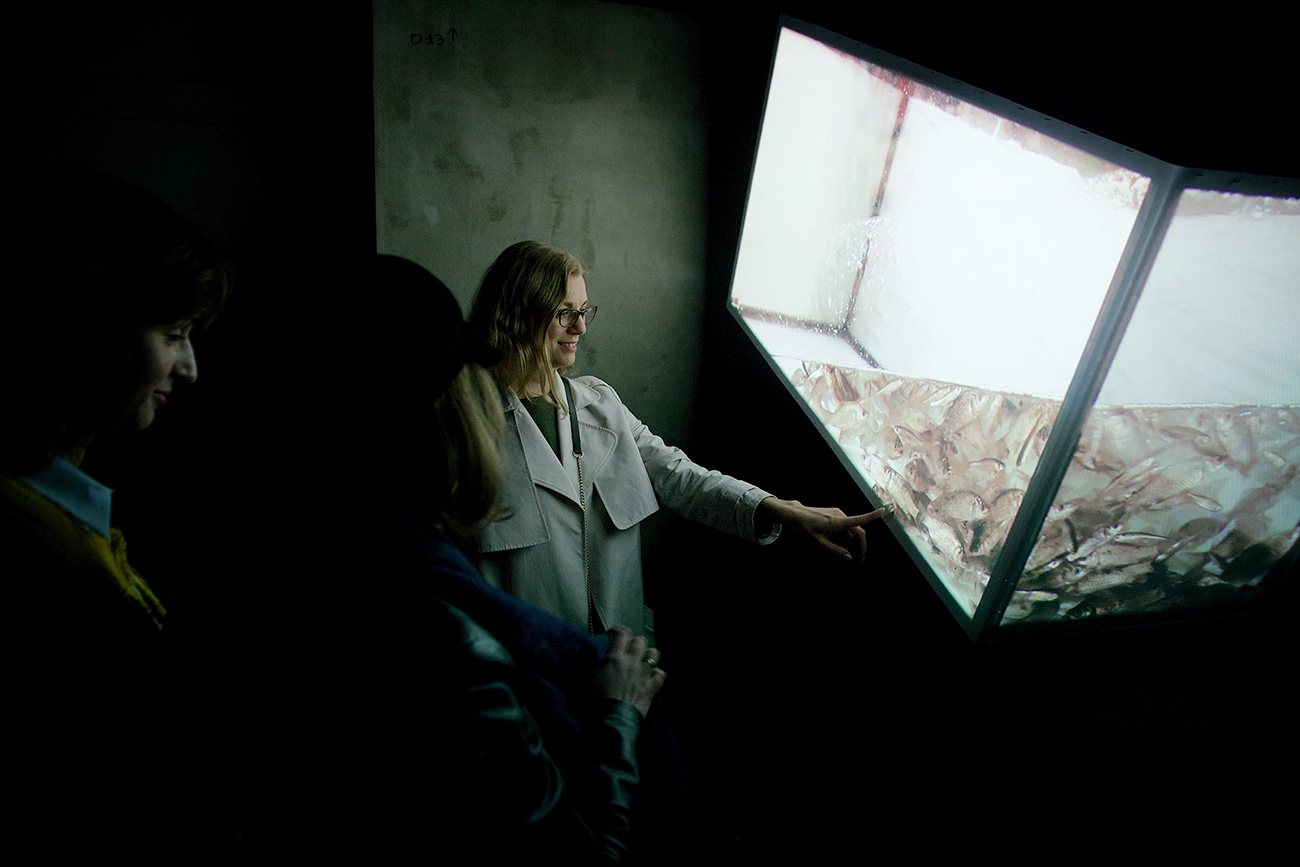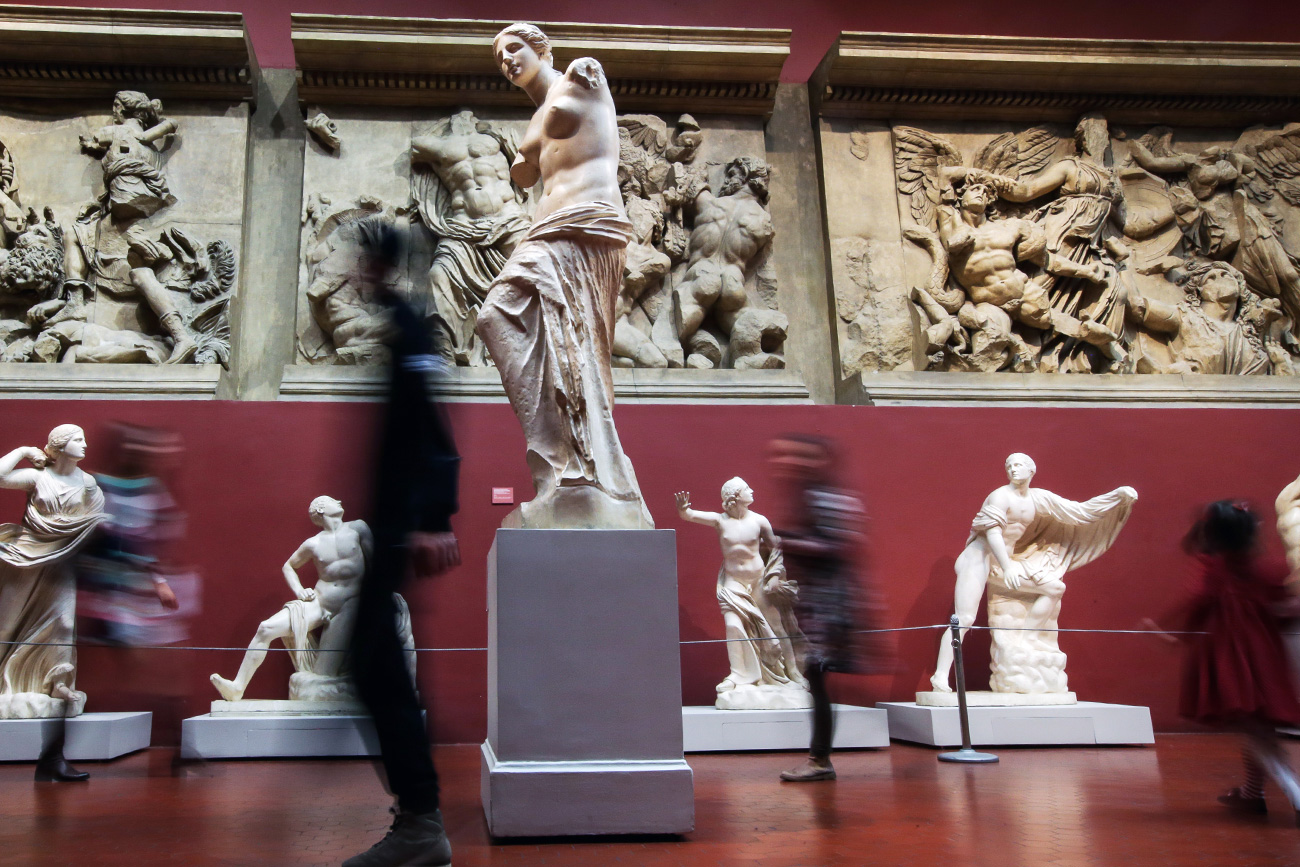 The Pushkin Museum was created as an educational and training establishment for artists and art students. / Source: Maksim Blinov/RIA Novosti
The Pushkin Museum was created as an educational and training establishment for artists and art students. / Source: Maksim Blinov/RIA Novosti
On May 31, 1912, the Alexander III Museum of Fine Arts was established, in association with Moscow University, and opened to the public with a grand ceremony. The Soviet government renamed the museum the State Museum of Fine Arts in 1932. In 1937, to commemorate the 100-year anniversary of the death of the great Russian poet Alexander Pushkin the museum was renamed in his honor. Since then, the official name has been the Pushkin State Museum of Fine Art.
Today, the Pushkin Museum, along with St. Petersburg's Hermitage Museum, is known for housing Russia’s largest collections of prized Western art, which spans a broad range of periods from ancient times to the modern day. The museum is located within walking distance from the Kremlin and the Multimedia Art Museum, another famous institution. The Pushkin Museum is home to ongoing exhibitions of ancient and contemporary art and offers guided tours in English, French, German, Spanish, Italian, and Chinese. Tourists from all over the world visit this museum to marvel at its treasures, and here are some of the reasons why.
1. See the Parthenon and Michelangelo's David under one roof
 A man visits the Pushkin State Museum of Fine Arts. / Source: Sergei Bobylev/TASS
A man visits the Pushkin State Museum of Fine Arts. / Source: Sergei Bobylev/TASS
The Pushkin Museum was created as an educational and training establishment for artists and art students. For this reason, prior to the construction of the building, replicas of world-renowned sculptures and architectural masterpieces were commissioned from some of Europe's best workshops. These made-to-scale casts and copies of the original works of art are displayed throughout the museum. The Greek Courtyard features marble reproductions of statues from the Parthenon and the southern portico of Erechtheion. The Italian Courtyard houses three different reproductions of Renaissance versions of David with the Head of Goliath (by Michelangelo, Donatello, and Andrea del Verrocchio), and you can also explore replicas of the Romanesque gate from the Liebfrauenkirche Cathedral in Freiburg, Germany and the northern gate of the Florence Baptistery.
2. Treat yourself to one of the best Impressionist and Post-Impressionist collections outside of France
 'Blue Dancers' by Edgar Degas. / Source: The Pushkin State Museum of Fine Arts
'Blue Dancers' by Edgar Degas. / Source: The Pushkin State Museum of Fine Arts
In the early 20th Century, Sergei Shchukin and Ivan Morozov, Russian industrialists and philanthropists, spared no expense when purchasing newly produced paintings from Parisian merchants. These men accumulated collections of outstanding quality. After the 1917 Revolution, these paintings were consolidated under the roof of the Museum of New Western Art. This museum was closed by Soviet authorities in 1948, and the collection was split up between the Pushkin Museum and the Hermitage. Moscow retained a number of masterpieces including: Portrait of the Actress Jeanne Samary by Pierre-Auguste Renoir, Edgar Degas's The Blue Dancers, representative works from Claude Monet's series (Boulevard des Capucines, Haystacks, Rouen Cathedral, and Water Lilies), Vincent Van Gogh's The Red Vineyard, Paul Gauguin's Night Cafe at Arles and Tahitian Women, Henri Matisse's Red Fish, and Pablo Picasso's Girl on the Ball.
3. Draw parallels between classical and modern art

Pushkin Museum XXI is a new program featuring expositions of contemporary art and intervention exhibitions, which include classical paintings displayed alongside contextually comparable works by contemporary artists. The program has already showcased exhibitions by Wim Delvoye, Viktor Pivovarov, Yasumasa Morimura, and more. At the Venetian Biennale, currently taking place, the Pushkin Museum is making its international debut with a combined exposition of contemporary artists.
4. Explore five museums in one
 Pushkin State Museum of Fine Arts during the 3rd annual Night of the Arts festival. / Photo: Artyom Geodakyan/TASS
Pushkin State Museum of Fine Arts during the 3rd annual Night of the Arts festival. / Photo: Artyom Geodakyan/TASS
Over the past century, the Pushkin Museum has been expanding both its collections and the buildings that house them. At present, facilities open to the public include the main building, with its classical portico (housing exhibits from ancient times to the early 20th century), the 19th and 20th Century European and American Art Gallery, the Private Collections, the Ivan Tsvetaev Educational Art Museum and a memorial apartment devoted to the outstanding pianist Sviatoslav Richter.
5. It’s Moscow’s version of the Louvre
 By the year 2024, there will be a “museum town” constructed around the main building. / Source: Architectural bureau 'Project Meganom'
By the year 2024, there will be a “museum town” constructed around the main building. / Source: Architectural bureau 'Project Meganom'
The Pushkin Museum's collection of original masterpieces spans several millennia of art history, including everything from Ancient Egyptian mummies and sarcophagi, to works by Sandro Botticelli and Paolo Veronese, to the work of contemporary artists. Like other massive museums, such as the Louvre or Hermitage, it is impossible to see the entirety of the Pushkin Museum in just one day. Plans are underway to double the overall exhibition space. By the year 2024, there will be a “museum town” constructed around the main building, featuring historic and modern buildings with tens of thousands of pieces dating from different periods.
If using any of Russia Beyond's content, partly or in full, always provide an active hyperlink to the original material.
Subscribe
to our newsletter!
Get the week's best stories straight to your inbox